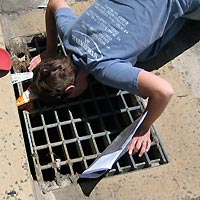
Step 2 - Other Data You Will Need
To elaborate on a famous saying: you can never be too rich, too thin, or have too much data – especially when you’re trying to analyze the interaction of your town/watershed’s landscape with its drainage systems. That said, much of the data that you need is publicly available on the CT ECO website, Connecticut’s one-stop shopping for statewide natural resource data. Here’s a brief list of some of the data layers/maps that you might want to hunt up. Most of these are used in our video demonstration of mapping drainage.
Statewide Data Layers from CT ECO
Watershed Boundaries
Obviously, you will need the boundary of the watershed that is the subject of your IC-TMDL or retrofit effort. It may also be useful for you to have the boundaries of the smaller basins that make up your watershed; it’s quite possible that your watershed plan might have different strategies for different basins.
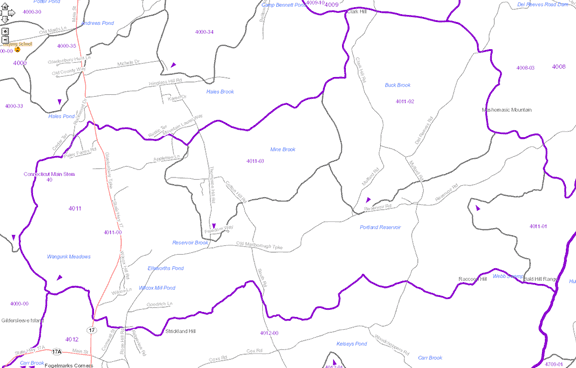 |
Portland area, from CT ECO
Hydrography
These are the waterways – streams, rivers, ponds and lakes. This layer is an integral part of the watershed system and relates to your drainage mapping.
 |
Portland area, from CT ECO
Topography
Topo will allow you to analyze the lay of the land (literally) in relation to your watershed, waterways and drainage system. Caution: if you have densely urban areas with lots of drainage systems, you will have to go into the field to check on whether your water drains according to the topography (see other parts of this step).
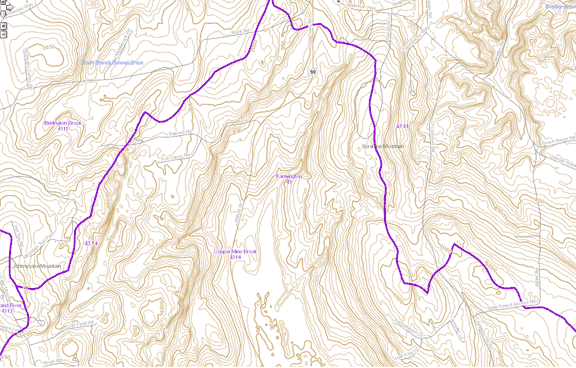 |
Farmington area, from CT ECO
High resolution imagery
The high resolution 2012 imagery on CT ECO is useful for all sorts of things. In this case, it can provide a great base map for you as you collect information about your impervious cover and discuss priorities for retrofits. Watch our Step 1 video on accessing the imagery from CT ECO. And, if you don’t have any digital data on buildings, roads, etc... (see below), it will enable you or a contractor to digitize your IC directly from the aerials.
 |
Torrington area, from CT ECO
Local Data Layers That Can be Very Useful
Parcels
Parcels, or property lines, are important to tie your landscape and drainage analysis to the realities of property ownership. Your tax assessor has this information, but the key question is whether it’s digital or not. About 2/3 of the towns in the state have some form of parcel data available on CT ECO, as part of the open space data layer. See our Step 1 Examples page for a few more examples.
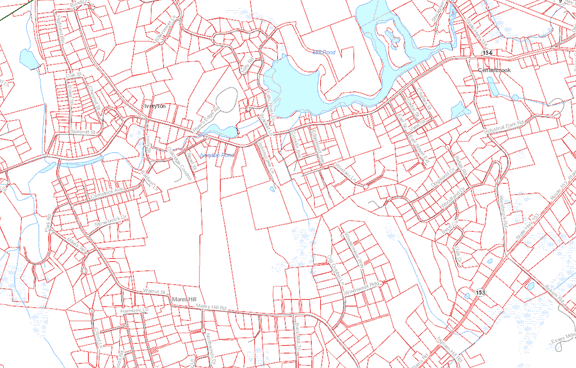 |
Essex area, from CT ECO
Planimetric Data
A fancy term for a detailed dataset that includes not only parcels but also building footprints, driveway and road outlines, parking lots and often even smaller features like sidewalks. This data contains pretty much all the IC coverage data that you need. See our Step 1 Examples page for more information.
 |
Old Saybrook area, from MapGeo Old Saybrook GIS site
Drainage Systems
A map of manmade drainage systems – i.e., your stormwater drains, pipes and outlets – is a wonderful resource for your determination of connected versus disconnected impervious cover (see our Step 2 video).
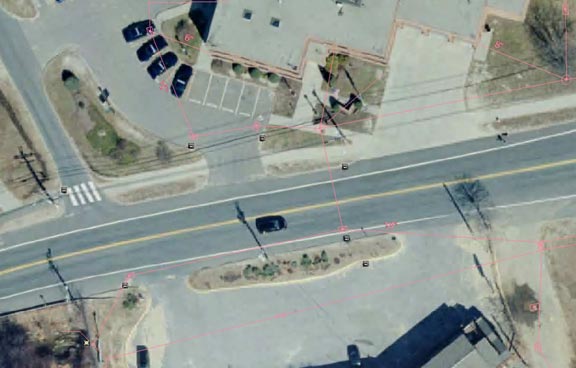 |
UConn campus, from CLEAR Eagleville Brook interactive map
Zoning
Zoning is not a critical data layer but it can help you to determine why some areas have so much IC, or are in store for a big infusion of IC in the future if current regulations are not changed. Lot coverage, driveway length, building size and many other things regulated by zoning, subdivision, and road regulations are the main way that your town controls IC. See Step 6 for tips (and a handy-dandy publication) on how to make these regs more GI/LID friendly.
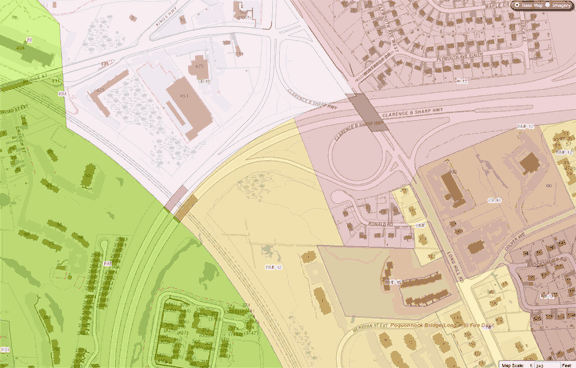 |
Groton area, from GrotonGIS site.


